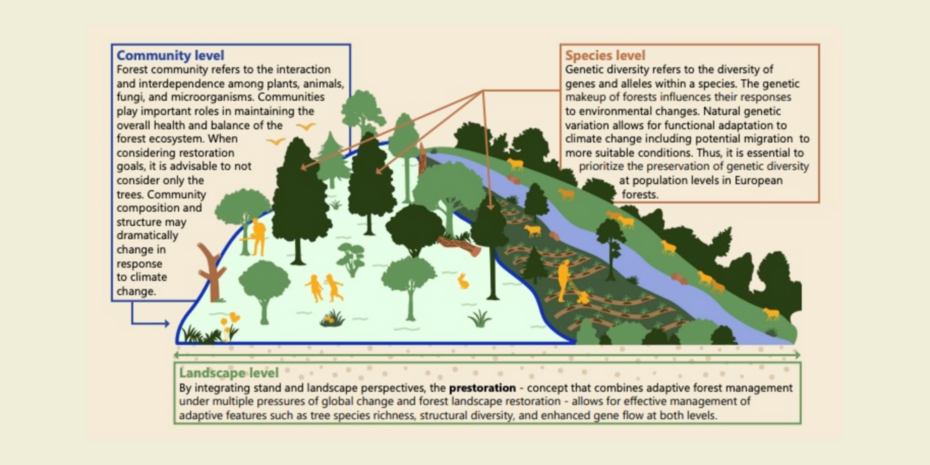SUPERB’s Policy recommendations for the EU Nature restoration Law
Towards biodiverse and adaptive forest landscapes for Europe’s people

SUPERB'S Policy recommendations for the EU Nature restoration law
SUPERB aims at large scale forest restoration in Europe, combining scientific and practical knowledge to drive actionable outcomes. This policy brief is based on the concepts underpinning this approach and provides four recommendations for changes to the proposed EU Nature Restoration law.
Today’s forests and their ecosystem services are under pressure from climate change and related disturbances such as droughts, fires and storms, the introduction of new pests and diseases. Further challenges are land-use changes and fragmentation, intensive management, and continuously high nitrogen deposition. At the same time, demand for forest products and services such as wood and carbon sequestration are increasing. All of these factors directly or indirectly influence forest ecosystems and their ability to meet diverse demands for ecosystem services, including habitat provision for biodiversity and carbon sequestration for climate change mitigation.
The EU Nature Restoration Regulation (a) recognizes the urgent need to address environmental challenges, (b) presents a much-needed approach to repair damage to Europe’s forest by 2050 and (c) pledges to prevent the worst impacts of climate change and biodiversity loss. It also provides an opportunity to improve the balance of the different functions that forests provide by prioritizing the restoration of ecological functions and biodiversity in forests. Finally, it directly links with and contributes to the New EU forest strategy for 2030 with restoration measures that will improve forest biodiversity and safeguard its adaptive capacity.
This policy brief is based on the concepts underpinning this approach and provides four recommendations for changes to the proposed EU Nature Restoration law. These aim to avoid undesirable developments resulting from the currently built-in backward looking view on forests, but instead help to realize the full and positive potential of forests for the future.
- Legal & Regulatory
- Policy Actors
- Climate change mitigation
- Connectivity and landscape diversity
- Other protective and regulatory functions
- Restoration after direct human impact
- Tree species/functional diversity
- Show 2 more

